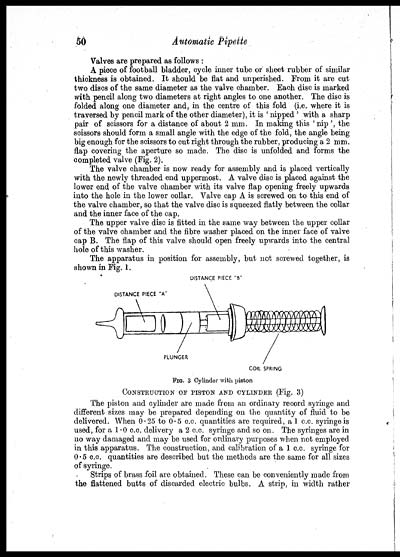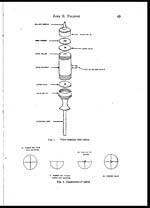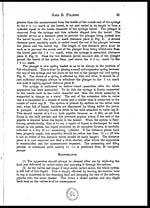Medicine - Veterinary > Veterinary colleges and laboratories > Indian journal of veterinary science and animal husbandry > Volume 12, 1942 > Original articles > Cheap and accurate home-made automatic pipette
(58) Page 50
Download files
Individual page:
Thumbnail gallery: Grid view | List view

50 Automatic Pipette
Valves are prepared as follows :
A piece of football bladder, cycle inner tube or sheet rubber of similar
thickness is obtained. It should be flat and unperished. From it are cut
two discs of the same diameter as the valve chamber. Each disc is marked
with pencil along two diameters at right angles to one another. The disc is
folded along one diameter and, in the centre of this fold (i.e. where it is
traversed by pencil mark of the other diameter), it is ' nipped ' with a sharp
pair of scissors for a distance of about 2 mm. In making this ' nip ', the
scissors should form a small angle with the edge of the fold, the angle being
big enough for the scissors to cut right through the rubber, producing a 2 mm.
flap covering the aperture so made. The disc is unfolded and forms the
completed valve (Fig. 2).
The valve chamber is now ready for assembly and is placed vertically
with the newly threaded end uppermost. A valve disc is placed against the
lower end of the valve chamber with its valve flap opening freely upwards
into the hole in the lower collar. Valve cap A is screwed on to this end of
the valve chamber, so that the valve disc is squeezed flatly between the collar
and the inner face of the cap.
The upper valve disc is fitted in the same way between the upper collar
of the valve chamber and the fibre washer placed on the inner face of valve
cap B. The flap of this valve should open freely upwards into the central
hole of this washer.
The apparatus in position for assembly, but not screwed together, is
shown in Fig. 1.
[NLS note: a graphic appears here - see image of page]
FIG. 3 Cylinder with piston
CONSTRUCTION OF PISTON AND CYLINDER (Fig. 3)
The piston and cylinder are made from an ordinary record syringe and
different sizes may be prepared depending on the quantity of fluid to be
delivered. When 0.25 to 0.5 c.c. quantities are required, a 1 c.c. syringe is
used, for a 1.0 c.c. delivery a 2 c.c. syringe and so on. The syringes are in
no way damaged and may be used for ordinary purposes when not employed
in this apparatus. The construction, and calibration of a 1 c.c. syringe for
0.5 c.c. quantities are described but the methods are the same for all sizes
of syringe.
Strips of brass foil are obtained. These can be conveniently made from
the flattened butts of discarded electric bulbs. A strip, in width rather
Set display mode to: Large image | Zoom image | Transcription
Images and transcriptions on this page, including medium image downloads, may be used under the Creative Commons Attribution 4.0 International Licence unless otherwise stated. ![]()
| Permanent URL | https://digital.nls.uk/75259259 |
|---|
| Description | Covers articles from 1942. |
|---|




